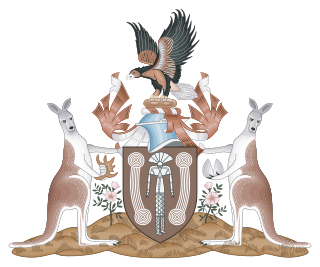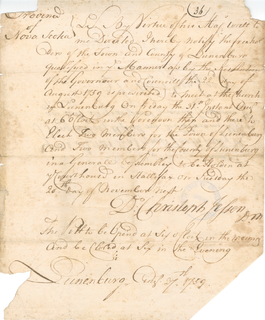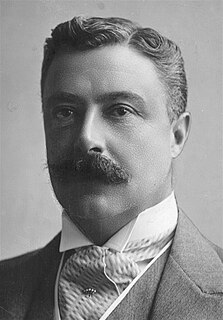
The Jervis Bay Territory is a territory of the Commonwealth of Australia. It was surrendered by the state of New South Wales to the Commonwealth Government in 1915 so the federal capital at Canberra would have access to the sea.
An administrator in the constitutional practice of some countries in the Commonwealth is a person who fulfils a role similar to that of a governor or a governor-general.
The title Administrator of the Government (Administrator) has several uses in Australia.

The Legislative Assembly of the Northern Territory is the only house of the Parliament of the Northern Territory, Australia. The Legislative Assembly has 25 members, each elected for single-member electorates. The voting method changed in February 2016 from full-preferential voting to optional preferential voting. The term of the Legislative Assembly is four years, and elections are on the fourth Saturday in August of the fourth year after the previous election, but can be earlier in the event of a no confidence vote in the Government. The last election for the Legislative Assembly was the 2016 election held on 27 August 2016. The next election is scheduled for 22 August 2020.

The Legislative Assembly for the Australian Capital Territory is the unicameral legislature of the Australian Capital Territory (ACT). It sits in the Legislative Assembly Building on Civic Square, close to the centre of the city of Canberra.

The Territory of Papua comprised the southeastern quarter of the island of New Guinea from 1883 to 1975. In 1883, the Government of Queensland annexed this territory for the British Empire. The United Kingdom Government refused to ratify the annexation but in 1884 a Protectorate was proclaimed over the territory, then called "British New Guinea". There is a certain ambiguity about the exact date on which the entire territory was annexed by the British. The Papua Act 1905 recites that this happened "on or about" 4 September 1888. On 18 March 1902, the Territory was placed under the authority of the Commonwealth of Australia. Resolutions of acceptance were passed by the Commonwealth Parliament, who accepted the territory under the name of Papua.

A writ of election is a writ issued ordering the holding of an election. In Commonwealth countries writs are the usual mechanism by which general elections are called and are issued by the head of state or their representative. In the United States, it is more commonly used to call a special election for a political office.
ACT Policing is the portfolio of the Australian Federal Police (AFP) responsible for providing policing services to the Australian Capital Territory (ACT). The Australian Capital Territory Police was an independent police force responsible for policing the ACT until 19 October 1979, when it was merged with the Commonwealth Police to form the AFP.
The history of the Australian Capital Territory (ACT) as a separate administrative division began in 1911, when it was transferred from New South Wales to the Australian federal government. The territory contains Australia's capital city Canberra and various smaller settlements. Until 1989, it also administered the Jervis Bay Territory, a small coastal region.
The Seat of Government Act 1908 was enacted by the Australian Government on 14 December 1908. The act selected the Yass-Queanbeyan region as the site for Canberra, the new capital city of Australia.

The Australian Capital Territory (Self-Government) Act 1988 is an Act of the Parliament of Australia enacted on 6 December 1988, that establishes ‘a body politic under the Crown by the name of the Australian Capital Territory’ and is the Territory's constitutional foundation.

The states and territories are the first-level administrative divisions of the Commonwealth of Australia. They are the second level of government in Australia, located between the federal and local government tiers.
The Commonwealth of Australia was formed on 1 January 1901, when the six British colonies of Australia were merged to form a single commonwealth within the British Empire. Apart from Western Australia, all of the founding area of the country was originally part of the Colony of New South Wales, founded in 1787. Since federation, the only changes to the borders have been the creation, acquisition, or independence of territories. Two countries became independent from Australia in the mid-20th century: Nauru, originally mandated to the country by the League of Nations; and Papua New Guinea, a combination of an earlier British protectorate and a League of Nations mandate.
In the Commonwealth of Nations, a high commissioner is the senior diplomat in charge of the diplomatic mission of one Commonwealth government to another. Instead of an embassy, the diplomatic mission is generally called a high commission.

The Constitution of Australia is the supreme law under which the government of the Commonwealth of Australia operates, including its relationship to the States of Australia. It consists of several documents. The most important is the Constitution of the Commonwealth of Australia, which is referred to as the "Constitution" in the remainder of this article. The Constitution was approved in a series of referendums held over 1898–1900 by the people of the Australian colonies, and the approved draft was enacted as a section of the Commonwealth of Australia Constitution Act 1900 (Imp), an Act of the Parliament of the United Kingdom.

The Parliament of the Northern Territory is the unicameral legislature of the Northern Territory of Australia. It consists of the Northern Territory Legislative Assembly and the Administrator of the Northern Territory, who represents the Governor-General. It is one of three unicameral parliaments in Australia, along with those of Queensland and the Australian Capital Territory. The Legislative Assembly replaced the previous Legislative Council in 1974. It sits in Parliament House, Darwin.
A Dominion was the "title" given to the semi-independent polities under the British Crown, constituting the British Empire, beginning with Canadian Confederation in 1867. "Dominion status" was a constitutional term of art used to signify an independent Commonwealth realm; they included Canada, Australia, New Zealand, Newfoundland, South Africa, and the Irish Free State, and then from the late 1940s also India, Pakistan, and Ceylon. The Balfour Declaration of 1926 recognised the Dominions as "autonomous Communities within the British Empire", and the 1931 Statute of Westminster confirmed their full legislative independence.










